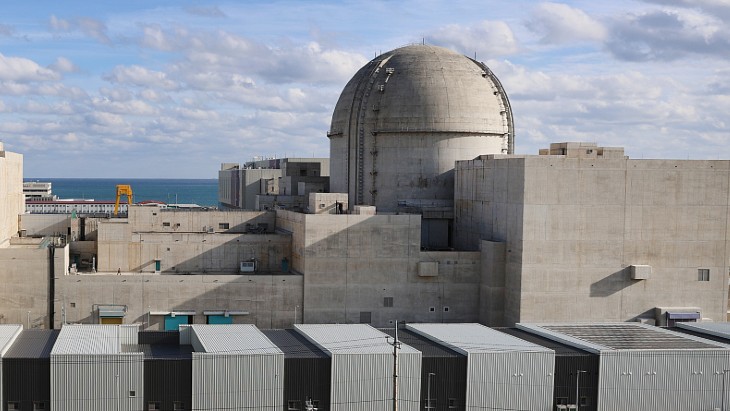A catastrophic fire and explosion at a Total oil terminal could affect safety at the adjacent Gravelines nuclear power plant, an annual review of nuclear safety in France has revealed. Total and EDF will make changes to avoid effects on nuclear safety from a previously unconsidered scenario.
In the 1970s two major industrial developments began near the town of Gravelines in the Flanders region of northern France: An oil terminal began operation in 1974, followed one year later by construction of the first reactor at the adjacent Gravelines nuclear power plant. The terminal went on to expand through the 1970s and by 1985 the nuclear power plant was the largest in the world with six reactors in operation.
_460x121.jpg) |
| Gravelines from the top of the earth berm (Image: EDF) |
A distance of only 700 meters separates Gravelines 1, a 910 MWe pressurized water reactor, from the nearest oil storage unit, which typically contains up to 90,000 cubic metres of crude oil. The terminal also has another six similar tanks. Recognising the safety implications, EDF erected a 20 metre high earth berm featuring deep drainage channels to stop the spread of liquid fuel spillages.
However, the annual review of safety in France's nuclear infrastructure by the Institute of Radiological Protection and Nuclear Safety (Institut de Radioprotection et de Sûreté Nucléaire, IRSN) has explained action to be taken on a disaster scenario outside of previous considerations - a phenomenon known as boilover that can occur during large and longlasting liquid fuel fires. This expansion of attention to external risks is in line with the worldwide response to the Fukushima accident, which has two of its root causes in the underestimation of tsunami risk and underpreparation for flooding events.
Boilover
IRSN described boilover as "an eruptive formation of a fireball ejected at height following a fire in a long-term storage tank in which a small amount of water would have decanted." This can occur with highly viscous hydrocarbons, said IRSN, such as heavy fuel oil or crude oil, which can separate into lighter and heavier parts in the intense heat of a fire. Any separated water at the bottom of the tank could be subject to rapid vapourisation, rupturing the tank and forcing burning fuel from the top in a fireball lasting up to one minute. Fire in less viscous fuels can result in a smaller boilover with correspondingly smaller heat production.
Analysis by EDF concluded that if Total's facility suffered a fire and boilover event at the closest crude oil tank, the resulting fireball could heat some parts of the Gravelines plant enough to jeopardise certain safety systems - including emergency power, venting and pumping systems. EDF calculated the worst case would be a fire when the tank was full of crude oil, during which boilover could occur after about 60 hours.
Actions
Having worked on the issue with EDF, Total is to change its use of the closest tank from crude oil to less viscous diesel to eliminate the most severe boilover scenario. IRSN said that a boilover of diesel would not have the same heating effect on safety systems at Gravelines. The change of use requires Total to empty and clean the tank, and until this is complete later this year it will only be used to hold minimal amounts of crude oil.
EDF's previous emergency plans would have seen the power plant shut down immediately on notification of a serious fire at the terminal. It will now add measures to evacuate or shelter plant staff within two hours.
Researched and written
by World Nuclear News






_49562.jpg)





